If you bought a new PC during the last 10 years, chances are it’s running Windows 7, 8, or 10. Soon, that may change. Microsoft has announced it will end support for the old versions of Windows, meaning in just a few months, your computer will stop getting security updates and bug fixes. Windows 7, 8, and 10 will continue to receive security updates, but they will be kept up to date for only the next 9 months.
As part of the Windows 10 launch, Microsoft released a new tool, the Windows Insider app, which enables users to test the upcoming Windows 10 as well as receive information about upcoming features and updates for their computers. To help users prepare their devices, Microsoft has released a new tutorial that will walk users through how to opt-in for the Windows Insider program, what to expect during the testing, and the expected features in Windows 10.
Many people are worried about whether or not their computer will be compatible with Windows 10 once it is released. The answer is yes! With the rise of the convertible laptops, we can now take our computers in tablet forms. And I have seen a lot of Windows 10 laptops with touchscreens – it’s time to prepare for the next Windows.
Although some of us have already seen leaks, it is now official that Windows 11 is a reality with a new look, new features and support for Android apps. But that’s not the case, Microsoft has announced that PCs and laptops will receive the upcoming Windows 11 as a free update. But for those who use the PCMR, there is a small problem: Your system has not been upgraded to Windows 11. Don’t worry about it. You’re entitled to it when you’ve done it.
Enable TPM via BIOS
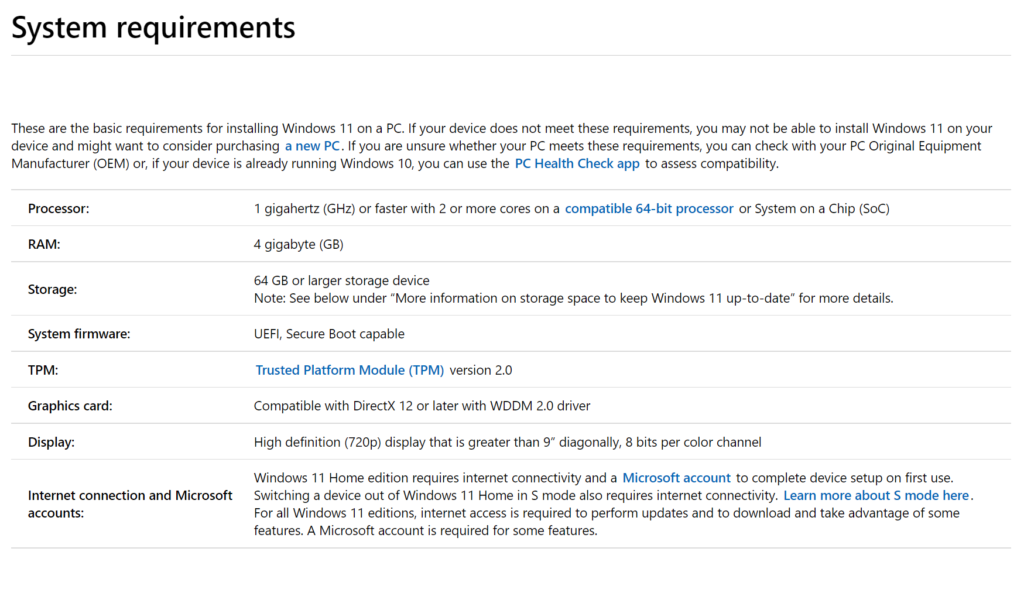
As always, Windows 11 must meet a number of requirements, including the TPM – Trusted Platform Module version 2.0. That’s the root of the problem. Before we look at how to do this, let’s explain what MTP is.
What is this TPM?
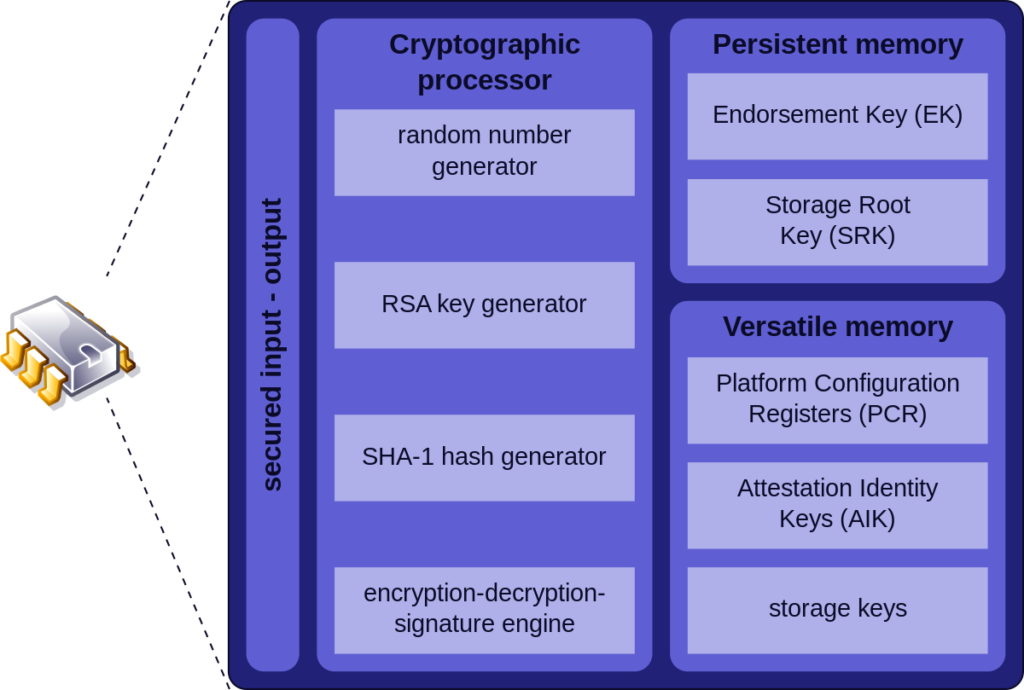
The Trusted Platform Module (TPM for short) is a technology specifically designed to provide hardware security features. With all these ransomwares and many malicious threats that our PCs are facing, TPM provides a good protection of your PC against these threats. This TPM is a secure crypto processor designed specifically to perform cryptographic functions. Advantages include protection against tampering and malware, which means the security function cannot be weakened.
Some of these advantages are
- Generate, store and restrict the use of cryptographic keys.
- Use TPM technology to authenticate devices on the platform using the TPM’s unique RSA key, written on the TPM itself.
- Help ensure the integrity of the platform by implementing and maintaining security measures.
If you want to know more, you can follow this link.
Enable TPM via BIOS
This process depends on the manufacturer of your card – so in this article we show screenshots of how to do it on the MSI card, and for other cards we include the instructions below.
Step one: Boot the system and press the key on the keyboard to open the BIOS.
Step two: Press to switch from EX mode to advanced mode.
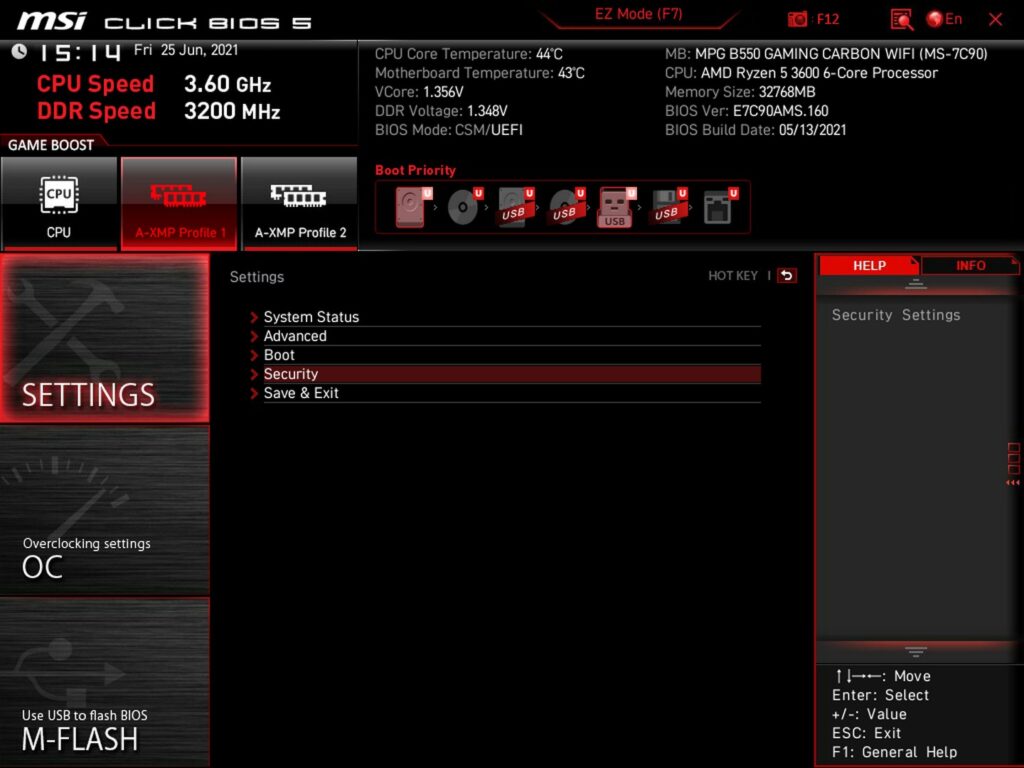
Step three: Go to Settings > Security > Trusted computers.
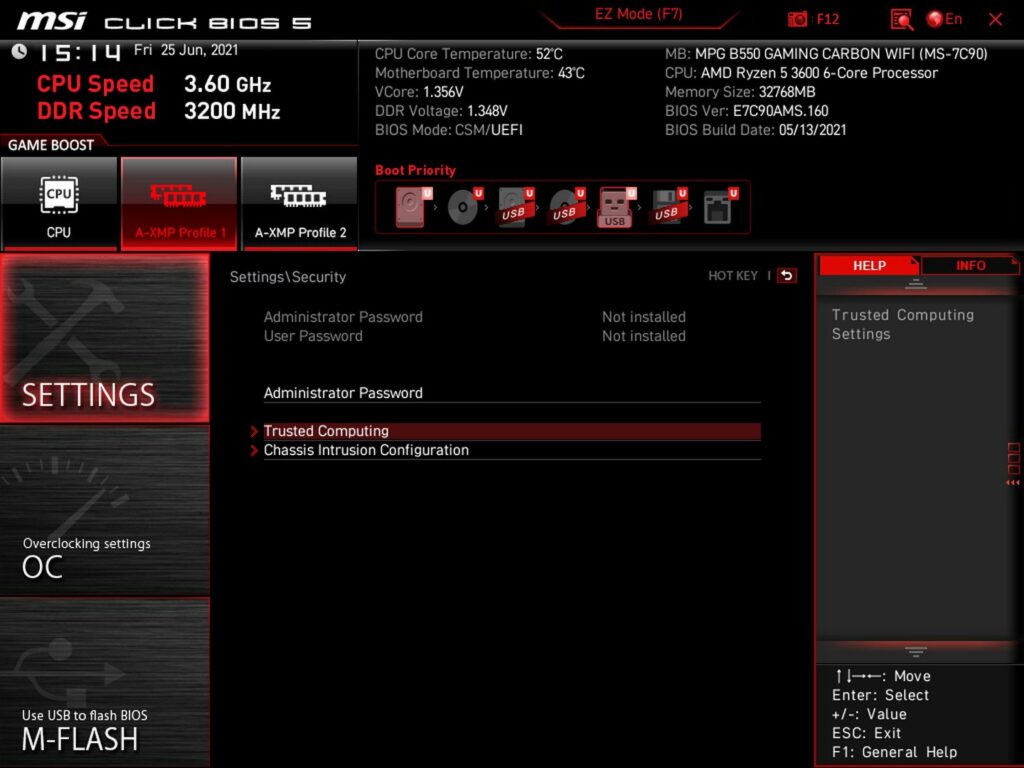
Step four: After entering, you will see several options where you will find the Security Device Support option and click Enable.
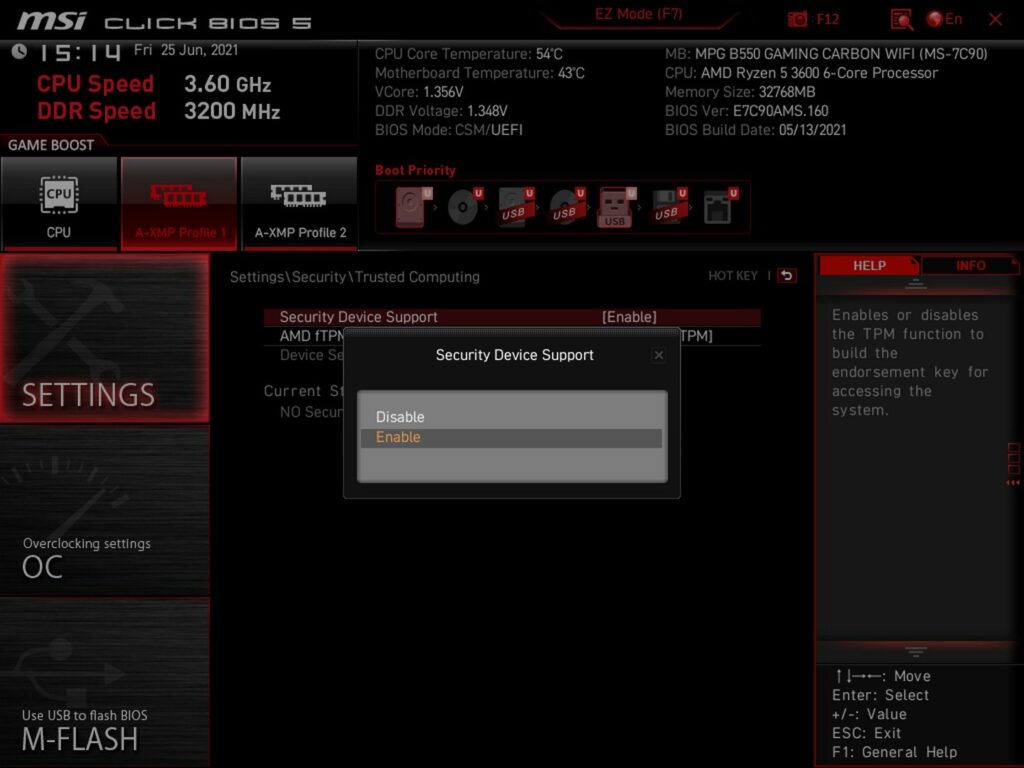
Step 5: Save and restart the system. After you download Windows 10, run the PC Health Check program, which you can download and check on the Microsoft website. You must be eligible to receive Windows 11 updates.
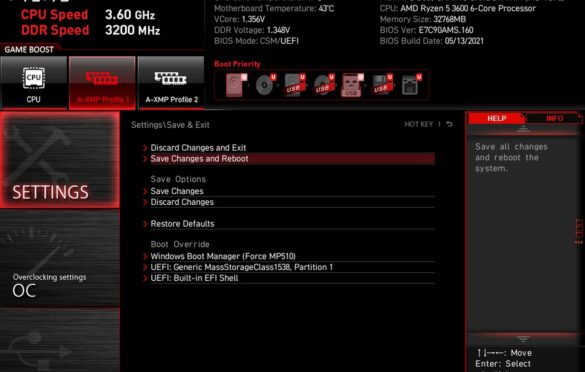
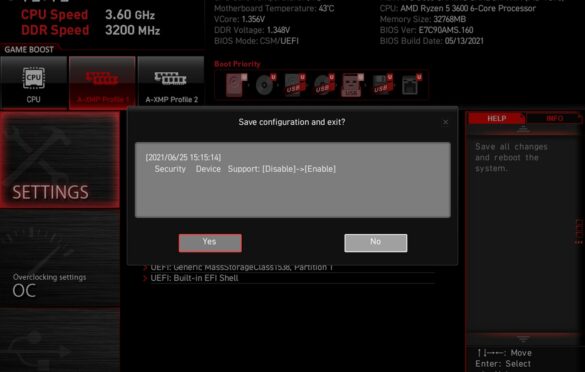
Other manufacturers of printed circuit boards
If you are using a different card, you can click on the corresponding stamps to see the activation steps.
What about OEM systems such as laptops or pre-assembled PCs?
If you are wondering about off-the-shelf PCs and laptops, it is because most of us depend on these systems, especially laptops. In our case, we personally use the ASUS Zenbook UX333 as our personal laptop. At the time we ran the PC health check, the laptop was compliant with Windows 11. What do you mean?
For OEM systems, such as B. For laptops and pre-assembled PCs, TPM is enabled by default at the factory and is therefore automatically compliant.

Like this
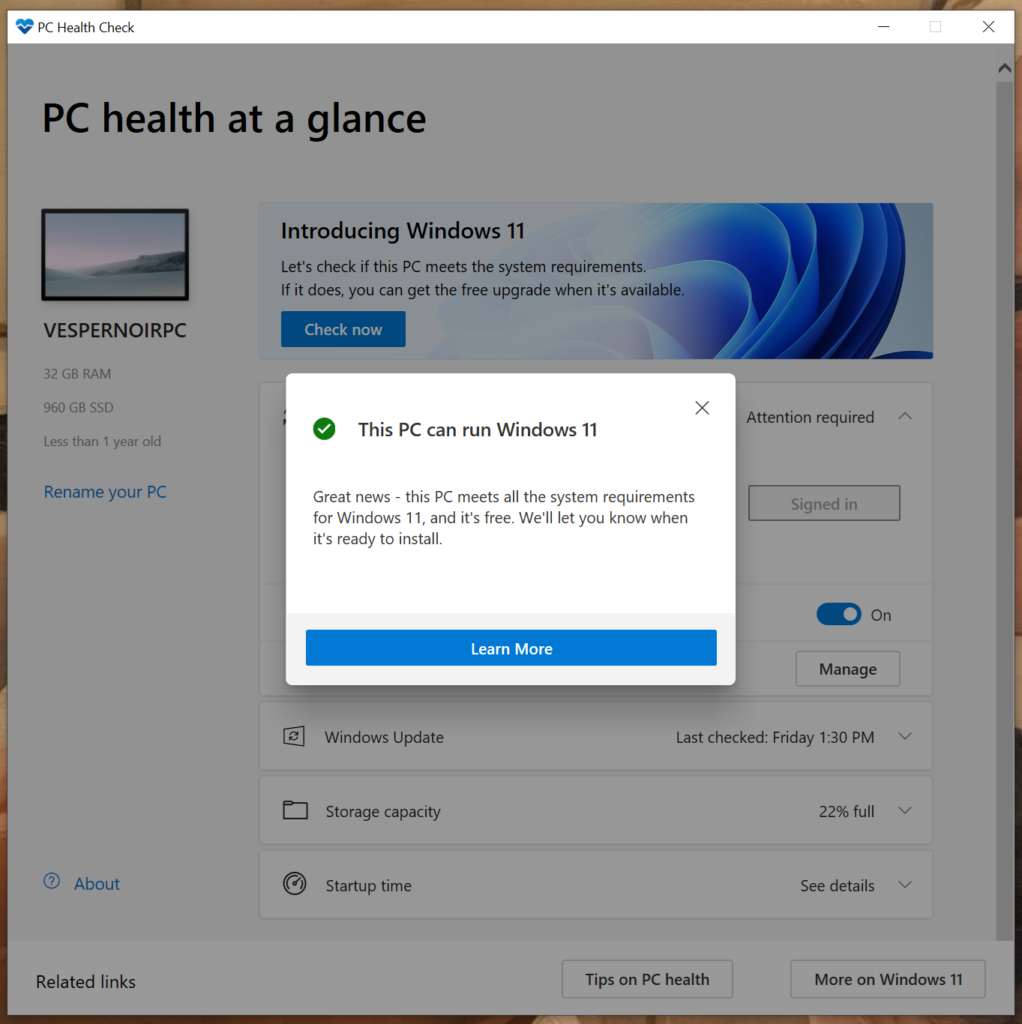
You should be able to see it. Are you worried? Well, so do we. Stay tuned, we’ll dive into the insider beta and share our impressions soon. So don’t forget to hit the Like button on our Facebook page.Windows 10 has been released by Microsoft, and some people have been asking if their current PC is compatible with it. As of right now, current Windows 7 and Windows 8.1 PCs are compatible. These are also the only versions of Windows that are officially supported going forward, so stay the course if you’re using those. There has been some speculation that Windows 11 will be the last Windows version that will be supported by Microsoft.. Read more about windows 11 update checker and let us know what you think.
Frequently Asked Questions
Why is my PC not compatible with Windows 11?
Here we will give you a few pointers about how to make your PC eligible for the upcoming Windows 11. C:UsersNameAppDataLocalPackagesMicrosoft.Windows.Cortana_1.1.1602.0_neutral_neutral_cw5n1h2txyewyLocalState7ConfigPreferencesWindowsStore GUID: D68EAB4B-7C3B-4A75-9AAD-BE8D98E9C862 Should I publish the intro? – If the intro is a joke, then yes. – If the intro is a critique of the author, then no. – If The Windows 10 release is just around the corner, and it’s a biggie. This is the first time that Microsoft is releasing a major operating system update on the same day that it’s released to the public. The reason for this is due to the way that Microsoft calls a release a “service pack”, instead of an “update”. Essentially, a service pack is a collection of updates, fixes, and other tweaks that work together to improve your OS. Service pack 11 will be the final service pack for Windows 10, so you may want to make sure your PC is ready!
Is my PC compatible with Windows 11?
With Windows 10, Microsoft has set the bar high for consumers and corporations alike by making the operating system both more secure and easier to use, while also releasing a host of new features and services. To make Windows more compatible with an ever growing number of systems, Microsoft has made Windows 10 more compatible with legacy applications, primarily through the inclusion of the Windows Compatibility App. This is a quick guide to getting Windows 10 installed on your PC (if it is compatible) and to make it ready for the next generation of Windows.
Will Windows 11 be a free update?
Microsoft is set to release a new version of Windows this year, and it’s called Windows 11. It’s a new operating system that aims to bring the best of Windows 10 to devices in the form of a new desktop and tablet user interface, plus a host of new features and capabilities. It’s also a free update for all Windows 7, 8, and 10 PCs and tablets. That’s great, but there are some cases where Windows 7, 8, or 10 users will not be able to receive the update. Since Microsoft has been talking about the Windows 10 free upgrade, I have become more and more excited. The upgrade is coming for Windows 7 and 8.1 users and it is expected to be free. In addition, you will be able to get it for a year before you have to pay for it. The only thing is that it will be released in stages depending on when you current Windows version was released. While Windows 10 may be free for some, it may be not for others.
Related Tags:
Feedback,windows 11 compatibilitywhen will windows 11 be releasedwindows 11 checkerwindows 11 system requirementswindows 11 update checkermicrosoft windows 11 upgrade checker,People also search for,Privacy settings,How Search works,windows 11 compatibility,when will windows 11 be released,windows 11 checker,windows 11 system requirements,windows 11 update checker,microsoft windows 11 upgrade checker,windows 11 tpm,windows 11 iso

